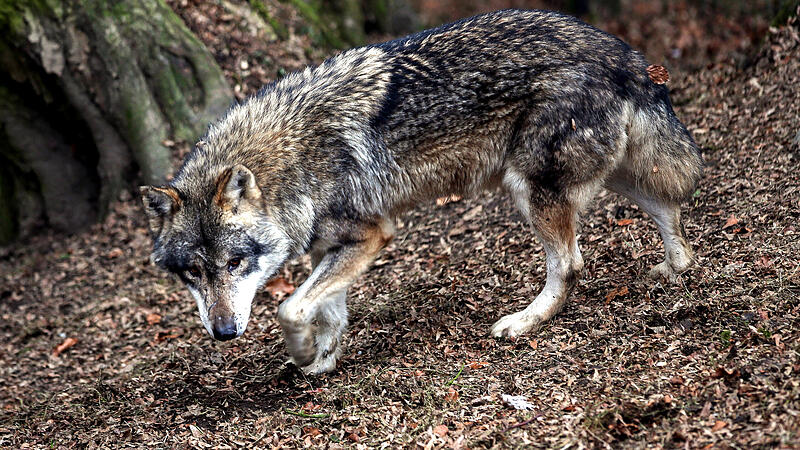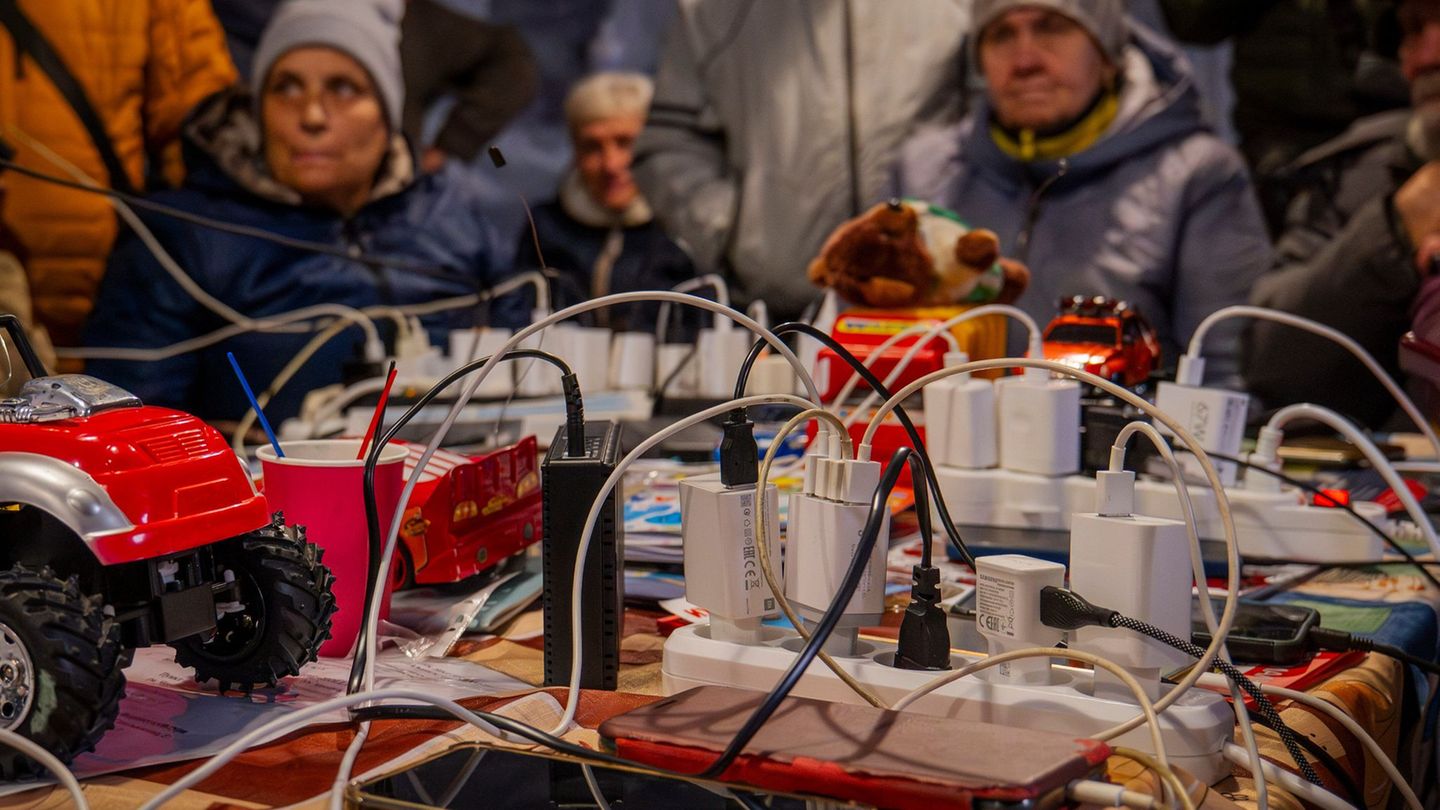Image: VOLKER WEIHBOLD
Politicians are increasingly targeting the predator with easier shooting regulations. An APA broadcast in the federal states shows: While there was a significant increase in the number of farm animals killed in 2022, this year there was a decline – seen nationwide. According to the federal states, 394 farm animals have fallen victim to wolves so far this year; according to official livestock statistics, there were 791 in the previous year.
Sheep and goats were particularly affected. The latter are the minority because they are kept less often. Cattle and so-called “gate game” only occur sporadically. This year’s “victim balance” will probably do better than in 2021 – at that time, according to the Austrian Center “Bear, Wolf, Lynx”, 506 farm animals were counted killed by wolves (498 sheep and goats, five cattle and three wild animals). ).
Significant declines in Tyrol and Carinthia
The declines so far have been significant – the alpine season is de facto over – in the disproportionately affected federal states of Tyrol and Carinthia. In Tyrol, 413 farm animals were killed by wolves, bears or golden jackals in 2022. So far this year there have been 183. As of mid-September, 144 farm animals were killed by wolves – in 2022 there were 355. The more positive balance also has to do with the Tyrolean state government’s shooting regulations, LHStv said. Josef Geisler (ÖVP) recently said. Because of this, the “hunting pressure has clearly increased.” So far, three wolves have been shot in Tyrol in accordance with the new regulation and one was run over.
The responsible Carinthian state governor Martin Gruber (ÖVP) argued in a similar way to Geisler. Not only the six shootings in the state so far, but also over 170 “deterrents” have helped to keep problem wolves away from farm animals. According to the current status, 119 farm animals were killed by wolves in Carinthia this alpine pasture season. This means a significant decrease compared to 2022, when 399 cracks by wolves were recorded. At the same time, the wolf population remained “dynamic,” the state said. 24 wolf individuals were detected in Carinthia in 2023, only four fewer than in the previous year.
No herd protection
The two most affected countries – like the others – still do not want herd protection as an alternative to shooting, as demanded primarily by environmental and animal protection organizations. This cannot be achieved across the board, Carinthia’s LHStv. Gruber recently said in the APA discussion on herd protection: “In the end, it’s a waste of money to achieve nothing.” In Tyrol, there was recently a positive assessment of three pilot alpine pasture projects in terms of herd protection, but at the same time it was emphasized that this could not be a comprehensive solution.
Aside from Tyrol and Carinthia, there were increases in livestock deaths in the five other federal states affected by wolves, although at a much lower level. In Vorarlberg, as of the end of August, a total of 19 animals were killed by a wolf in nine tearing events in 2023. The year before there were eight animals, in 2021 none and in 2020 ten. Vorarlberg politicians lost patience this summer and want to be able to shoot “problem wolves”. A removal order issued in mid-August 2023 for a wolf in the rear Klostertal and Silbertal (Bludenz district) has been revoked by the State Administrative Court following complaints from the environmental organizations WWF and Ökobüro. In November, the state parliament will decide on changes to the law that will then enable the removal of wolves.
According to the state of Salzburg (as of September 21st), 45 sheep and goats were killed this year, four more were injured and 30 animals are missing. In 2022, according to the Austrian Center “Bear, Wolf, Lynx”, 13 torn farm animals were counted. However, this year remained well below the negative balance of 2021. At that time, 81 animals were killed, 13 were injured and 34 were missing. Just two weeks after the black-blue state government was sworn in, the shooting of “problem wolves” in Salzburg was approved at the end of June, and a good week later the first of them was killed in the Hochkönig/Steinernes Meer area.
More wolf cracks in Upper Austria
According to the Austrian Center, 23 sheep or goats have already been killed and two injured by wolves in Upper Austria this year. 13 of the 23 cracks were confirmed by DNA, ten by the crack pattern. According to the country, there are also some unexplained cases. The number of cracks has multiplied in recent years, emphasizes the responsible regional councilor Michaela Langer-Weninger (ÖVP), “which has resulted in an increase in compensation payments from 838 euros in 2017 to the current 6,331 euros.” The country has so far released two wolves for shooting – one in the Mühlviertel and one on the Dachstein Plateau. The four-week shooting permit has now expired for both, but it is likely that it will be granted again in the Mühlviertel.
In Styria, the number of wild animal deaths increased significantly from 2022 to 2023: In the previous year, according to official statistics from the Center for Bears, Wolves and Lynxes, two sheep were killed in Styria. It was proven that they were attacked by a wolf. In 2023 there were already 18 sheep killed and one young cattle killed by the end of August. Eleven animals were injured – according to statistics, all of them were caused by wolves. A new regulation for easier wolf removals is currently being assessed. Several comments have already been made, but the deadline is still running.
In Lower Austria, too, the number of livestock injuries increased compared to the previous year. 15 cases were recorded in 2022 and 25 so far in 2023. According to the state, 24 sheep and one goat were affected. A new wolf regulation has been in force in the state since April. A prior official order for deterrence or shooting is no longer required.
For LH deputy Stephan Pernkopf (ÖVP), the new wolf regulation is one of four points for better protection of people and agriculture. There is also increased funding for herd protection measures and compensation for cracks. The EU is required: “Wolves are no longer threatened with extinction, so their protection status must be changed.” A demand that has been raised everywhere by political leaders in the countries for months.
My themes
For your saved topics were
new articles found.

info By clicking on the icon you can add the keyword to your topics.
info
By clicking on the icon you open your “my topics” page. They have of 15 keywords saved and would have to remove keywords.
info By clicking on the icon you can remove the keyword from your topics.
Add the topic to your topics.
Source: Nachrichten




